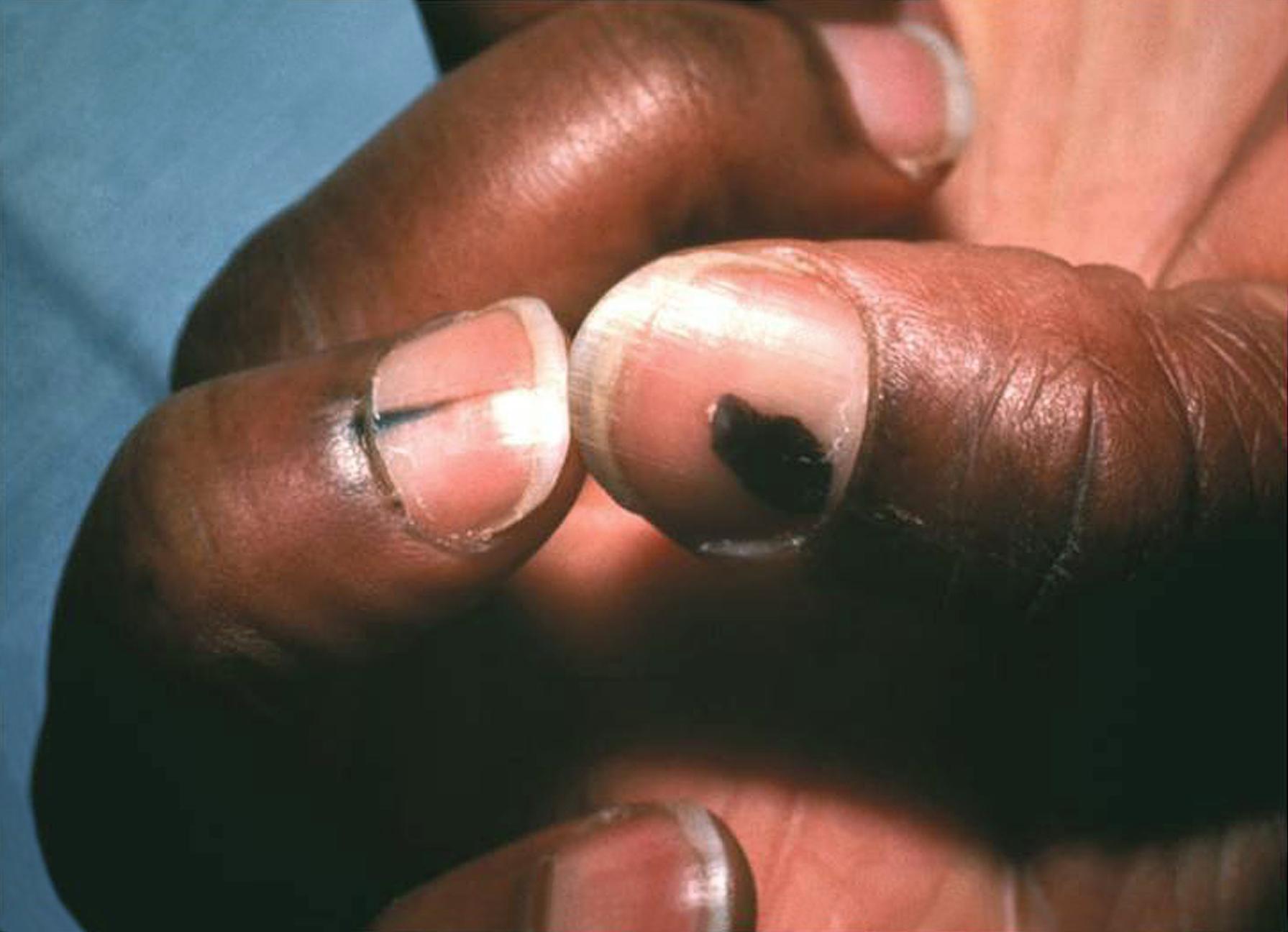- Acne
- Actinic Keratosis
- Aesthetics
- Alopecia
- Atopic Dermatitis
- Buy-and-Bill
- COVID-19
- Case-Based Roundtable
- Chronic Hand Eczema
- Drug Watch
- Eczema
- General Dermatology
- Hidradenitis Suppurativa
- Melasma
- NP and PA
- Pediatric Dermatology
- Pigmentary Disorders
- Practice Management
- Precision Medicine and Biologics
- Prurigo Nodularis
- Psoriasis
- Psoriatic Arthritis
- Rare Disease
- Rosacea
- Skin Cancer
- Vitiligo
- Wound Care
Article
Acral Lentiginous Melanoma More Common in Southeast Asian Patients Than Other Asian American & Pacific Islander Groups
Author(s):
A poster presentation from the 19th Annual Skin of Color Society Scientific Symposium analyzed the differences in presentation of cutaneous melanoma among Asian American and Pacific Islander patients.
There are limited studies characterizing melanoma presentations in Asian American and Pacific Islanders (AAPIs) according to a poster presentation from the 19th Annual Skin of Color Society Scientific Symposium in New Orleans, Louisiana.1 Studies that do include AAPIs are limited by small cohort sizes and have reported AAPI as a singular racial group. Without updated data, it is not clear whether melanoma presents differently among distinct AAPI ethnic groups.
Angela Wei and colleagues sought to determine melanoma characteristics at diagnosis in AAPI populations and to compare the characteristics among APPI ethnic/regional groups. To collect their data, Wei et al analyzed all histologically confirmed cases of malignant melanoma in the Surveillance Epidemiology and End Results Specialized Asian American and Pacific Islander Database which includes data from 1994 to 2014. The dataset included California, Connecticut, Hawaii, Iowa, New Mexico, and Utah, and metropolitan regions of Atlanta, Detroit, and Seattle-Puget Sound.
Patient demographics and melanoma characteristics including age, sex, race, melanoma subtype, primary location, ulceration, Breslow thickness, pathologic stage, and sentinel lymph node positivity were all recorded. SEER-reported AAPI ethnic groups were divided into AAPI regional groups of East Asian, South Asian, Southeast Asian, and Native Hawaiian and Pacific Islander. Melanoma subtypes were divided into superficial spreading, nodular, acral lentiginous, other, and melanoma not otherwise specified. ANOVA and Chi-square analyses were used to compare melanoma characteristics between AAPI regional groups.
Results
From their data collection, Wei et al found that superficial spreading melanoma was the most common melanoma subtype (20.8%), followed by acral lentiginous melanoma (ALM) (11.8%), and nodular melanoma (9.1%), among melanoma cases with specified subtypes. The lower extremity/hip area was the most common primary location for melanoma overall (38.2%).
Additional results based on demographics include:
- South Asian patients were younger at the time of diagnosis (53.4 years) compared to East Asian (60.5 years), Native Hawaiian and Pacific Islander (59.1 years), and Southeast Asian (58.3 years) patients
- Superficial spreading melanoma was the most common subtype in East Asian (21.3%), Native Hawaiian and Pacific Islander (27.1%), and South Asian (26.7%) patients, while ALM was the most common subtype in Southeast Asian patients (15.34%)
- Compared to other AAPI regional groups, East Asians had higher rates of head and neck lesions (15.6%), while Southeast Asians had higher rates of lower extremity lesions (45.6%)
- Southeast Asians had higher rates of metastatic melanoma at diagnosis (33.2%) compared to all other AAPI regional groups (East Asian, 21.4%; Native Hawaiian and Pacific Islander, 23.2%; South Asian, 23.2%)
- Additionally, Southeast Asians had higher rates of ulceration (37.3%) compared to all other AAPI regional groups (East Asian, 21.1%; Native Hawaiian and Pacific Islander, 18.5%; South Asian, 23.8%)
- No significant association was found between AAPI regional group and sentinel lymph node positivity (P=0.46)
Wei et al concluded that Southeast Asian patients have higher rates of ALM and more advanced disease at the time of diagnosis compared to all other AAPI regional groups. As ALM is an aggressive melanoma subtype, the authors noted that it may explain the more advanced and aggressive disease features seen in the Southeast Asian patient population.
“Future studies should validate these findings in a larger cohort and investigate whether these differences in melanoma characteristics translate to differences in survival. Currently, there are no widely accepted methods to categorize skin type and tone amongst different AAPI ethnic groups. We used regional groupings to categorize AAPI ethnic groups to reflect similarities in skin tone, genetic/geographic origins, and environmental influences. These findings are important in further risk-stratifying different AAPI subgroups in order to improve our understanding of melanoma in this heterogeneous population,” said Wei et al.
Reference
- Wei A, Fanel L, Tripathi R, Bordeaux J. Differences in presentation of cutaneous melanoma among Asian American and Pacific Islander patients. Poster presented at the 19th Annual Skin of Color Society Scientific Symposium, March 16, 2023; New Orleans, LA.
Newsletter
Like what you’re reading? Subscribe to Dermatology Times for weekly updates on therapies, innovations, and real-world practice tips.
















